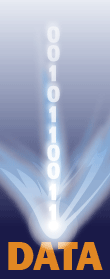
The major sources of engineering information are the technical specifications, procedures and guidelines. They relate to a number of disciplines like process, mechanical, instrumentation, and cover different phases of the project engineering and management.
For an engineering services provider with the annual turnover of US$ 100 million, the number of documents (WORD, EXCEL or PDF format) is well above 400.
These documents are a real treasure. The market price of one page may be as high as US$ 1000.
If a company uses PLM software for storing drawings and tracking their revisions and approvals, it simply adds these documents to PLM.
PLM software works hard: all the document revisions - from petty typo to full re-writing - undergo the same approval process. The reviewer should open online the revised document and scan all the pages in an attempt to find the revision sources mark-up. What if a document contains over 50 pages?
The challenge is to identify the outdated documents due to new editions of international standards, customized project specifications, or new technologies in the market. You are wondering how often it happens? From my experience, every 2 years any non-active document should be revised.
Another big problem of technical documentation is lack of generality. Extending the validity of the existing one beyond a single project is not practiced. Instead, new version is created, differing from a source by one or two lines of text. Once I worked for a company having over 50 specifications for painting!
Project auditing is a nightmare. The QC engineer major skill is to quickly find the clause or some figure in the document applicable to the product inspection at hand. It's like finding a needle in a haystack. Ditto for other disciplines.
While top management tries to convince engineers think out of the box, innovate and diversify their skills, the bulk of them are busy struggling to memorize locations of information pieces and their relationships. My observation is that documentation is a bottleneck of modern project engineering.
Today no engineering services provider can maintain the quality of engineering documentation answering the project requirements and the client's expectations.
Outdated documents are a source of the project risks. In one of the desalination projects I participated - 160 MLD SWRO plant - not providing full set of internal standards (information hiding) with the bid led to a delay of over 6 months in the project execution.
Sometimes solutions may be just borrowed from other industries. My trigger was the famous Blockbuster vs Netflix case. The former built its empire on renting out CD discs conditioned by movies duration and quantity, while its successor – on video streaming turning all movies into a single one watched without interruptions.
I would label it as "batch vs streaming" pattern of business transformation.
This "batch" link is to the typical technical specification for a big pump driving the reverse osmosis desalination (www.crenger.com). It is a solid HTML file stored in the Windows directory. It may be easily converted to WORD or PDF format with all nice tables and figures. Conversion does not change its nature - the one of the same old CD disc from Blockbuster.
This "streaming" link is to a similarly looking document. Unlike the first, it exists neither in the file directory nor in database; it is compiled every time on-the-fly from deeply structured data requested by the user. I already discussed Data & Structure in my post Know-How Classification.
The huge advantage of Engineering Information Streaming (EIS) is that different users will be served with different flavors of the "same" document. In other words, EIS targets not only the engineered products but engineers too. It is a core of Industry 4.0 strategy.
EIS removes the last hurdle off the way to Crowd Engineering where everyone may auction her/his piece of engineering knowledge (or updating micro-service) to companies. Crowd Engineer or simply CRENGER may become a real alternative to the corporate cogwheels.
Crowd engineering raises the problem of copyright protection. Over my professional life I wrote 100+ technical specifications and guidelines. All of them are created in the same manner - by gleaning known pieces of information from open sources – the product catalogs, international standards, books and white papers. What has been bothering me over these years is why the final document is backed by NDA – non-disclosure agreement? In other words, it is subject to the corporate copyright protection globally. The problem worsens with proliferation of the document copies and modifications.
EIS stops this nonsense - unique pieces of data are not copied and have its owner for life as the data identification (read copyright protection) is executed automatically.
EIS makes redundant the PLM software. Now, like in the Netflix case, we have one huge virtual document under perpetual updating.
Finally, EIS will unleash the B2B commerce as it is a primary condition of the Purchase Streaming – the main discovery of my post "Rethinking B2B eProcurement".
